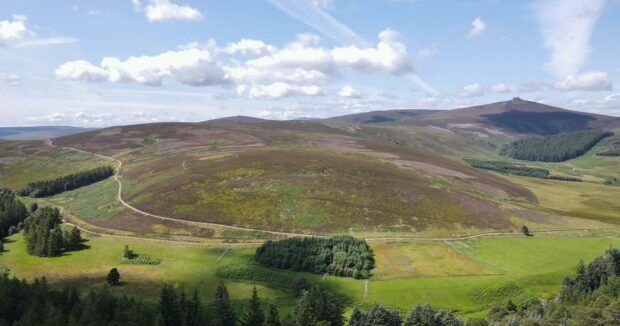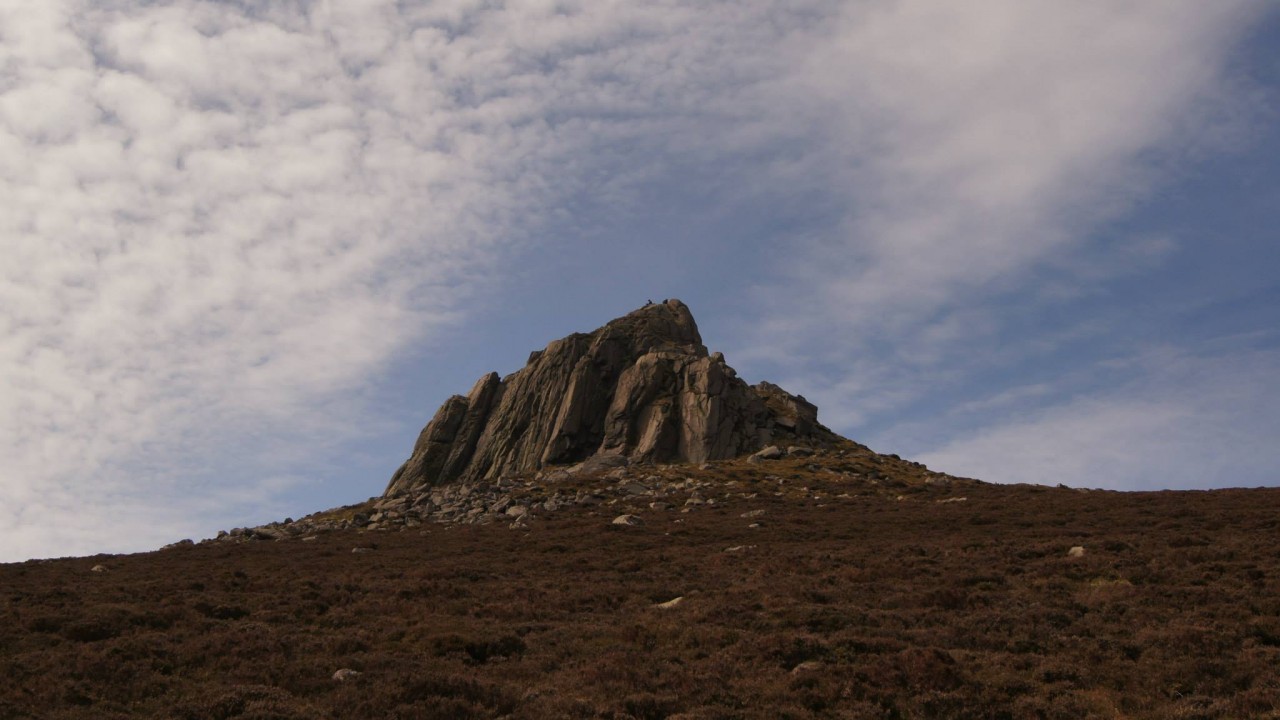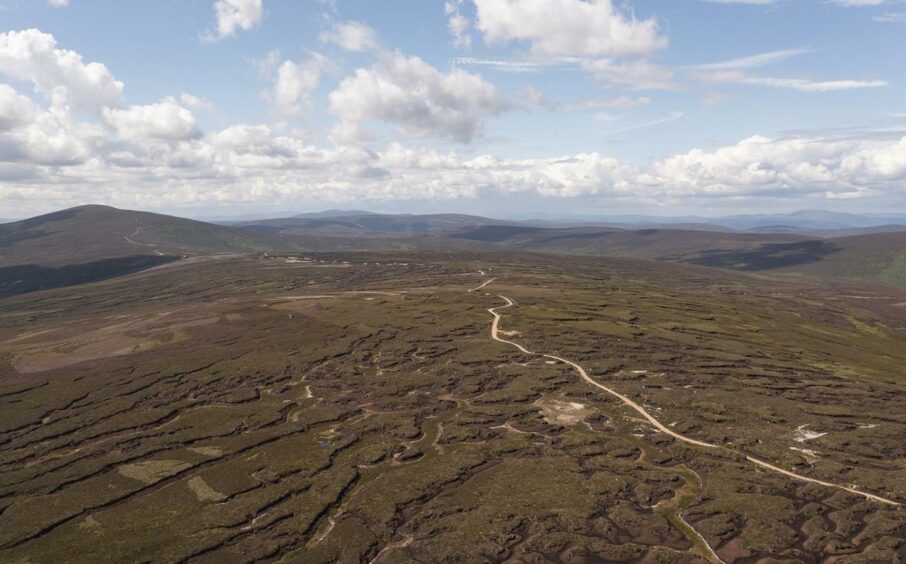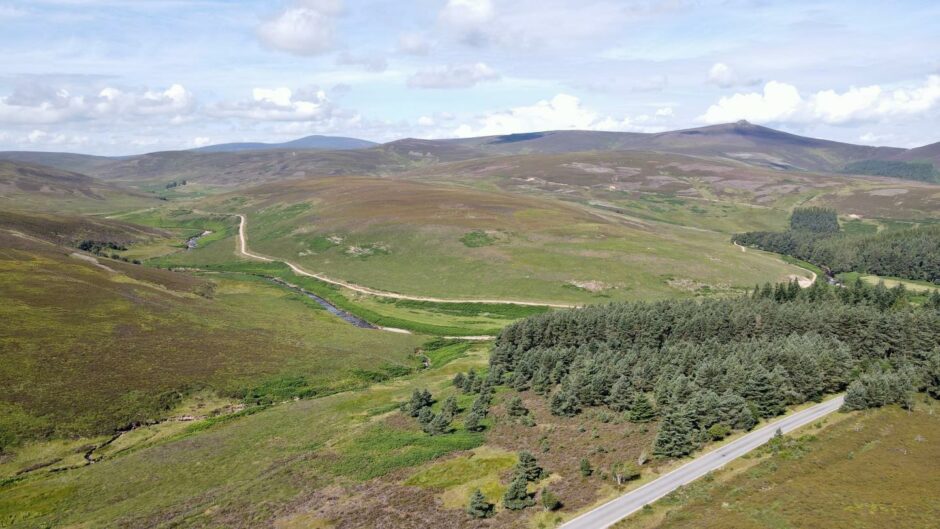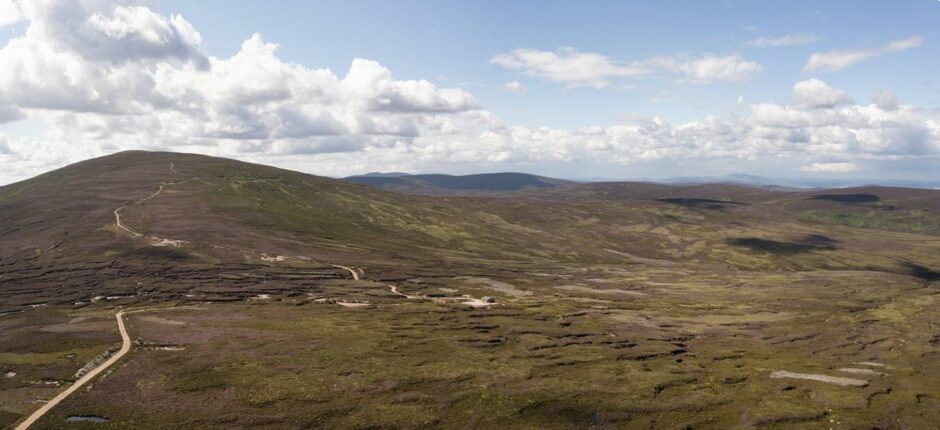Plans to capture more than 1.4 million tonnes of carbon by planting trees and restoring peatland in Glen Dye, home of the popular hill Clachnaben, have been revealed.
Scotland-based investment fund manager Par Equity and Aviva Investors have acquired 6,356 hectares of moorland in the Glen Dye area of Aberdeenshire, to the south of Banchory.
They plan to apply to undertake “extensive peatland restoration work” across around 1,800 hectares of the land, and new planting of trees over around 3,000 hectares.
Up to 1,000 hectares of this would be productive conifer trees, and 2,000 hectares would be native woodland.
The land targeted for the peatland improvements and afforestation (the opposite of deforestation) includes the prominent hilltop of Clachnaben, which is perhaps only rivalled in popularity for hillwalkers in Aberdeenshire by Bennachie.
If the proposed project goes ahead as planned, it would be designed, implemented and managed by Scottish Woodlands Ltd, a forestry management and timber harvesting company.
It would be undertaken over a five-year period.
How would this affect hillwalkers, and how would this help with climate change?
Par Equity and Avia Investors say the project would result in “significant employment opportunities”, and that “public access and facilities will be enhanced over the land, which is currently enjoyed for its scenic splendour, including the prominent hilltop of Clachnaben”.
Those behind the initiative plan to initially plant trees adjacent to existing woodland in the area, and said planting will be “designed to fit into, and enhance, the landscape”.
Peatlands and trees are two important tools in Scotland’s battle to capture carbon and reach net zero.
When peatlands are in their natural state, they remove carbon dioxide from the atmosphere and store it underground, but when they are degraded, they can release tonnes of stored carbon into the air.
And similarly trees absorb carbon from the air, and store it into their wood.
The Glen Dye project developers say the initiative has the potential to lock up around 1.4 million tonnes of carbon, including 468,000 by 2040, and around 32,750 a year from 2040 to 2055.
Timber produced in the project would be “utilised in accordance with the agreement at COP26“, “on the use of sustainable-produced wood products”.
It is also intended that the scheme will create “significant opportunities for learning in the fields of land management, forestry and peatland management”.
Ambitions to reach net zero targets and ‘nature-based solutions’
Scotland has committed to reaching net zero greenhouse gas emissions by 2045, meaning that by that year, the country will hopefully be capturing as much emissions as it produces.
Daniel McHugh, chief investment officer, real assets, at Aviva Investors, explained the plans at Glen Dye would be part of Aviva’s climate transition fund and its own commitment to achieving net zero.
He said: “One of the most critical aspects of the climate transition fund we launched this year is that it materially reduces carbon impact primarily through the decarbonisation of the built environment, but also via nature-based solutions, including afforestation.
“This is the first of many investments we expect to make in this space, and the intention is for our carbon removal programme to be considered a best-in-class initiative which not only sequesters a vast amount of carbon over its lifetime, but does so in a way that takes into account the surrounding habitats and community.
“In the case of Glen Dye Moor, we will do this while maintaining and improving the network of access trails, enhancing biodiversity and restoring the degraded peatland across the land.”
‘A very positive investment in natural capital’
Par Equity investment manager Tom Croy added: “We have been actively involved in forestry investment for 10 years and the acquisition of land at Glen Dye offers a tremendous opportunity to deliver an outstanding project as part of the journey to net zero.
“It will make a major contribution in terms of carbon capture and peatland restoration at national scale and will also provide employment while protecting and enhancing the landscape for the enjoyment of the many people who live in and visit the area.
“This is a very positive investment in natural capital and a project that will be beneficial to Scotland in an era where the transition to net zero is such a priority.”
